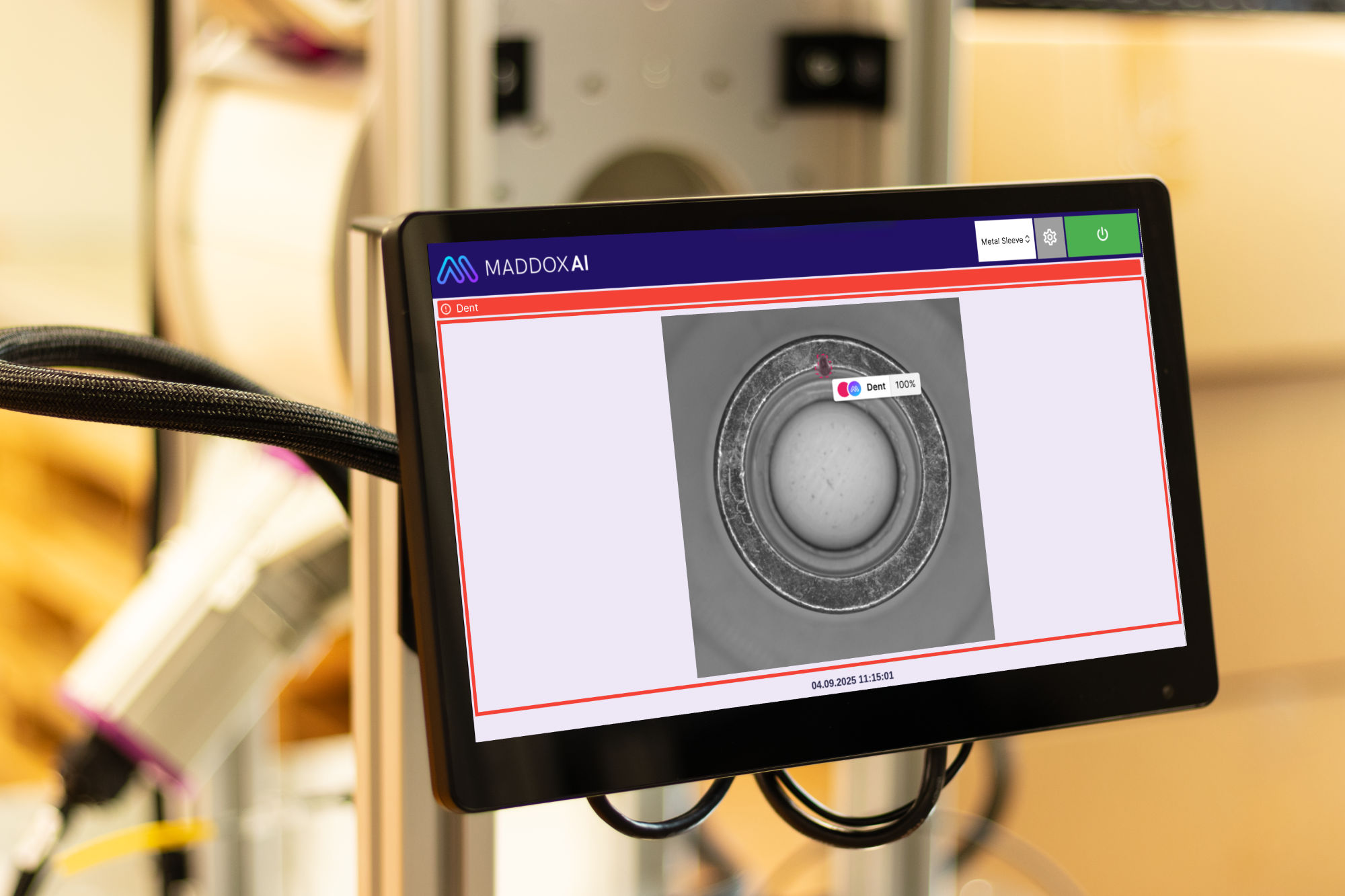Maddox AI delivers an AI-based inspection solution that optimizes, automates, and digitizes visual quality control for manufacturing. The company builds entirely new inspection systems or upgrade existing camera setups that struggle with inaccurate inspections and excessive false rejects (pseudo scrap).
Interview with Peter Droege, Co-Founder and CEO of Maddox AI
A brief description of the company and its activities.
Peter Droege: Our technology is co-developed with leading AI researchers from Cyber Valley in Tübingen, Germany – who are also part of our founding team – and is used by world-class industrial companies. The team combines PhD scientists, former strategy consultants, mechanical engineers, and software developers.
What are the main areas of activity of the company?
P.D: We develop and implement automated visual inspection systems across multiple industries, including automotive, medical, electronics, food and beverage, and consumer goods. We have competencies in developing machine vision software, designing and building camera systems, and implementing these solutions.
With our Maddox AI software, we draw on our expertise in machine learning to make it very simple for non-AI experts to train precise models. This means designing intuitive workflows and making a complex topic accessible and practice-ready so everyone can use it. That’s why we provide tools that make it easy and efficient to create consistent, high-quality datasets—the main bottleneck in AI development. Training is then as simple as clicking a button, while the Maddox AI platform takes care of all technical details in the background.
If a customer needs a camera system—for example to replace manual visual inspection—we design and build the hardware to your specifications. If a customer is not happy with the inspection accuracy of existing camera systems, we can also use our software to optimize the existing camera hardware.
Whether customers need a turnkey system or software only, we support them at every step and ensure the system performs in production exactly as intended.
What’s the news about new products/services?
P.D: Two factors decide success with AI in manufacturing: a solid ML architecture and a consistent data foundation. Architectures are largely similar across vendors; the bigger lever that is too often neglected is data consistency.
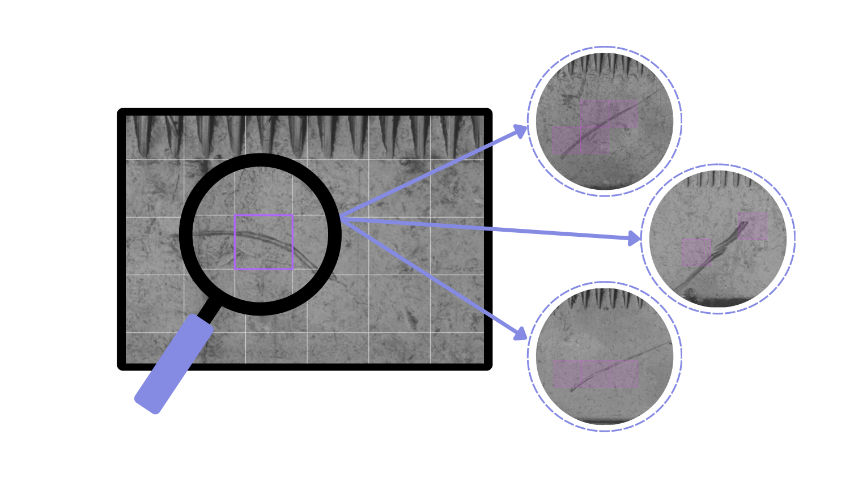
That’s why at Maddox AI we focus on making it especially simple and efficient for end-users to label data that is needed for AI model training. For example, in high-volume production, defects are rare relative to good parts. Instead of manually hunting non-OK (NOK) samples, our tool „Similarity Search” automatically suggests images for annotation with regions similar to already labeled defects, speeding up annotation. Another example is when certain defects are extremely rare, we can generate realistic synthetic defect images to enrich training data.
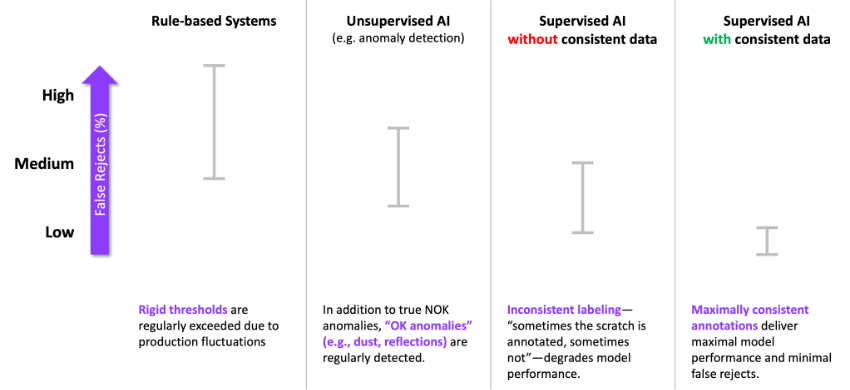
What are the ranges of products/services?
P.D: We offer hardware and software in flexible packages. Our full-service option includes a risk free project with payment only when agreed objectives are achieved. This approach removes the financial uncertainty of conventional machine vision development for our customers. No matter which package you choose, our team supports you every step of the way.
- Self-service: With our intuitive software, you can train and deploy AI models yourself.
- Retrofit (Full-Service): We upgrade an existing camera system with our software and AI models.
- End-to-end (Full-Service): We develop the hardware and train the AI models end-to-end—you get a fully integrated, ready-to-run solution.
What is the state of the market where you are currently active?
P.D: The vision market is highly competitive and fast-moving, with established players and startups pushing the technology. Yet a large share of factories still rely on manual visual inspection. That’s surprising given the well-known drawbacks: limited attention spans, subjective judgments, and a shrinking skilled workforce. In projects, we consistently see far more inspector-to-inspector variability than companies expect—leading to two costly outcomes: bad parts slip through, and good parts are rejected. Many rule-based and legacy vision systems suffer similar issues, struggling with thresholds that drift and brittle logic under changing conditions.
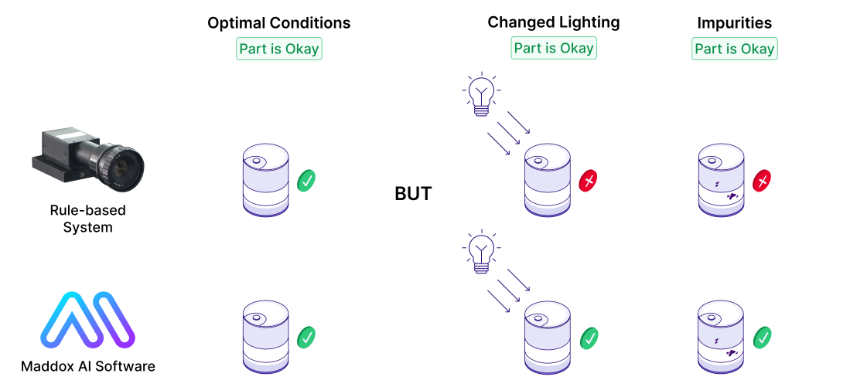
In practice, this means performance often falls short on complex cases, driving false rejects (pseudo scrap). Maddox AI addresses this by pairing supervised AI with high-quality, consistent datasets, reducing false rejects versus rule-based approaches and many other AI systems. As a result, we can cut excessive pseudo scrap and costs. We believe this is the right path: even in tough macro conditions, especially in manufacturing, we are growing against the broader downward trend.
What can you tell us about market trends?
P.D: AI is driving major advances because it handles complex inspection scenarios better than rule-based systems and reshapes how people work with vision solutions.
With rule-based systems, engineers must constantly tweak thresholds and rules to keep up with changing production conditions. AI, by contrast, learns flexible, robust patterns from real-world data—what defects look like and what normal “OK” variation looks like. Compared with rule-based vision, AI models are far easier to extend across variance: for color variants or changing illumination, you don’t rewrite algorithms or retune thresholds; you include those good-part variations in training, and the system automatically expands its “OK space.”
The real payoff comes when quality and production experts can put their know-how into the system without writing code. That’s why Maddox AI offers a no-code workflow distilled to three steps: annotate data, start training, evaluate results. This lowers the barrier to entry, accelerates iteration, reduces reliance on scarce specialists, shortens time-to-value, and unlocks use cases that previously stalled for lack of resources.
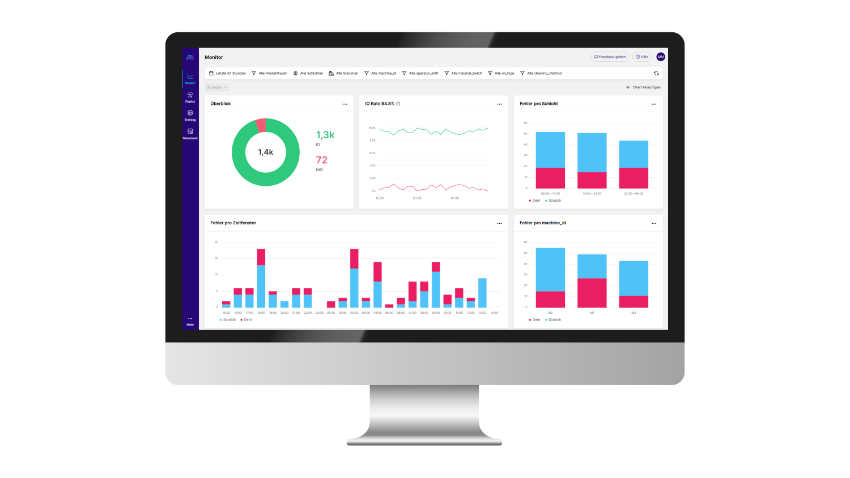
At the same time, connectivity and the desire to derive insights from data are growing: manufacturers are beginning to correlate machine and process data with quality KPIs to generate actionable insights—the first steps toward a more connected, automated, and continuously improving production environment (Industry 4.0).
What are the most innovative products/services marketed?
P.D: The most innovative solutions make powerful technology truly accessible to the people who use it. Think of cars: they’re incredibly complex machines, yet you don’t need to be an engineer to drive one. AI should be the same. With the Maddox AI platform, our goal is to put advanced supervised AI and practical data quality tools in the hands of the practitioners closest to production.
What estimations do you have for the end of 2025?
P.D: By the end of 2025, we aim to continue our growth trajectory and deliver product upgrades that make building and deploying powerful AI models even simpler. We’ll use the rest of 2025 to gear up for a major product and sales push in 2026, anticipating a more favorable economic environment.
Maddox AI GmbH
Bismarckstraße 136
72072 Tübingen

